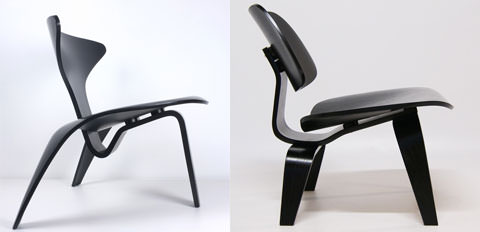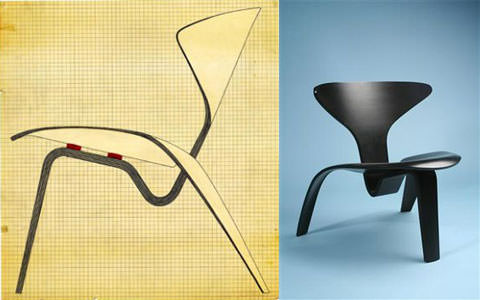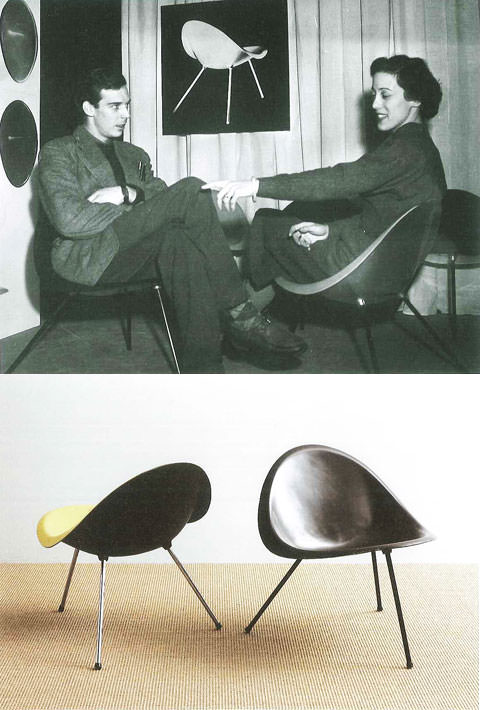Poul Kjaerholm - Cabinetmaker to Modernist Icon - Part Two
Whilst working at the Fritz Hansen factory, Kjærholm was given a chance to experiment with industrial materials and also to begin developing an idea that was first conceived back in 1950 – a black painted plywood chair that would go on to become the PK 0 Chair. The chair was formed of two pieces of laminated plywood that were then joined under the seat by rubber shock absorbers and although the appearance and seating position of the PK 0 must clearly have been influenced by the classic LCW Chair, designed by Charles and Ray Eames in 1945, it almost feels as if Kjærholm has simplified his interpretation by using only two elements as opposed to the five used to construct the LCW.

The PK0 (left) and the LCW (right)
But, sadly, the PK 0 Chair never reached production stage and his stay at Fritz Hansen lasted barely a year. Unfortunately, in the very same year he was given a chance to realise his design for the PK 0, Fritz Hansen were immersed in developing Arne Jacobsen’s Ant Chair; the first stackable chair formed from a single piece of laminated plywood. Jacobsen had been commissioned to design the chair for use in the canteen of the pharmaceutical company, Novo Nordisk, and they signed an order for 300 units. Kjærholm, with complete confidence in his design and a deep yearning to see his chair on the production line, then, rather bullishly, suggested to Søren Hansen that he make a choice between producing the PK 0 or the Ant. Understandably, from a business point of view, Hansen went with the Ant and Kjærholm walked away from Fritz Hansen with his prototype under his arm.

Luckily, this wasn’t the end of the PK 0. Ironically, but also with a nod towards the importance of this design, in 1997, Fritz Hansen produced a limited run of 600 editions of the PK 0 Chair in celebration of the company’s 125th Anniversary.

The Moulded Aluminium Chair
Throughout 1953/54, after his departure from Fritz Hansen, Kjærholm began making connections with some of Denmark’s leading design and architectural practices which afforded him the time and opportunity to continue exploring the idea of producing furniture as an industrial product. In 1953, he was contacted by a furniture manufacturer called Chris Sørensen because he had seen the PK 0 and approached Kjærholm with the intention of setting up a relationship. He took Sørensen up on his proposal and began working on a design for a new, lightweight metal chair along with a graphic identity for their new joint venture. His initial sketches for this metal chair appear to show a bowl-like seat that stood upon three legs and these rough outlines would go on to produce a prototype of the Moulded Aluminium Chair. The seat was formed of injection moulded aluminium and the three legs were cleverly connected to the underside of the seat via the bursas that were left from where the aluminium was injected and a couple of compulsory vent holes that allowed air to escape from the mould. They only produced a modest run of just 20 chairs but this design clearly showed Kjærholm’s way of thinking at that time, with the intent to produce a new design that could be mass-produced and easily shipped: seat shells stacked, legs inserted upon arrival with the end user.
To be continued...
